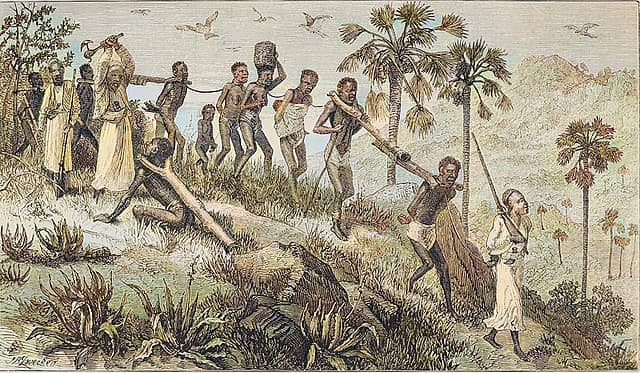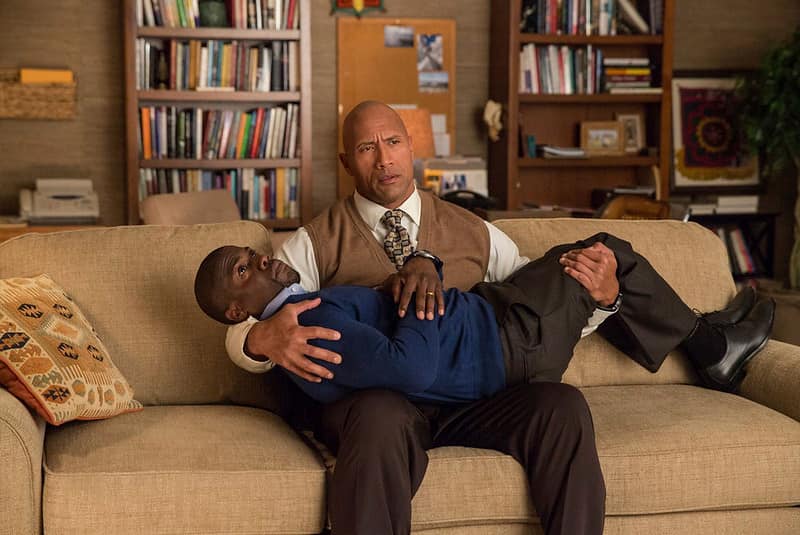While the Europeans captured West Africans as slaves and shipped them to the Western countries and the Caribbean, Arabs enslaved East Africans.
The transatlantic slave trade, another name for the Indian Ocean Slave Trade, has been extensively researched and studied with rich historical records. Its impact has also been felt and is being taught down generations. It’s by far one of the worst atrocities done to humanity.
Become an insider. Subscribe to our newsletter for more top trending stories like this!
Without minimizing the impact of the transatlantic slave trade, it’s crucial to note that slavery in Africa started before the arrival of the Europeans. This happened through the Indian Ocean slave trade.
This slave trade isn’t as popular, and the number of enslaved people sold is unclear. But, there are several facts about the East African Slave trade that will help you appreciate the freedom you have now. Read on to learn more.
If you’d like to know more about the enslavement of people of African heritage, Amazon has some interesting reads.
East Africans Traded Slaves in the Region
It’s hard to believe that our ancestors sold fellow Africans as slaves. But it’s true.
Slavery has existed in almost all forms of civilization. For example, among Africans, a person would be temporarily enslaved until their debt was settled. In central East Africa, ethnic groups like the Marava, Yao, and Makua were fighting. The people captured were traded as slaves within the region.
By the time the Arabs took an interest in the slave trade in East Africa, the structures were already set, largely contributing to the success of Arabs’ involvement.
Read Also: Black History: The Remarkable Life of Josephine Baker
Arab Muslims Sold Africans to the Middle East
According to Tidiane N’Diaye, a Senegalese author, Arab Muslims captured white enslaved people and sold them to Arabia and the Middle East. However, the military power in Europe was growing, and it suppressed Islamic expansion. This led to a limited supply of slaves, forcing the Arab Muslims to explore Africa for slaves.
During the Indian Ocean Slave Trade, Arab Muslims sold Africans to the Middle East to be:
- Field workers
- Harem guards
- Soldiers in the Omani army
- Gulf pearl divers
- Sailors like in Persia
- Domestic workers and sex slaves.
Most Slaves Were Domestic Workers
Most Africans sold in the slave trade in East Africa went to wealthy families as domestic workers. Women were also captured as sex slaves.
Often, the enslaved women would have children with their masters or get married to them. The resultant children were freed from being slaves by their fathers. With time, the enslaved community became part of the local population.
Zanzibar: Hub of the East African Slave Trade
Arabs began to settle on the east coast of Africa. That is modern-day Kenya, Tanzania, Mozambique and Madagascar. This is also where slaves were taken from.
The Arabs intermarried with some of the people, resulting in the emergence of the Swahili people. The Swahili people were key players in the trade of other items like Ivory, whose demand grew.
Particularly, the Oman settled in Zanzibar, modern-day Tanzania. In the 17th century, the Indian Ocean slave trade was more organized and booming. The East Coast, specifically Zanzibar, was therefore buzzing with activity of slave and merchandise trade. This created the largest market for the slave trade on the east coast of Africa.
The demand for slaves increased in the 17th century due to the following reasons:
Become an insider. Subscribe to our newsletter for more top trending stories like this!
- There was an increased demand for Ivory. Slaves were being used to carry it.
- The French had established coffee and sugar plantations in Reunion and Mauritius. They needed more labor.
- The British navy was intercepting ships, making it hard for Brazilian traders to operate in West Africa. The traders, therefore, accessed Mozambique and Zambezi Valley through the Cape of Good Hope to get slaves.
Several Enslaved People Remained in Africa
Another reason why the Indian Ocean Slave trade boomed was because the Omani began to plant cloves in Zanzibar. There were large plantations to meet the global demand for cloves, and hence, the settlers needed slaves for labor.
Moreover, since the demand was mainly for women as domestic workers, most men would remain in Africa and work in settlers’ plantations.
Read Also: How Were Slaves Captured in Africa? 4 Horrifying Ways
Most Famous Slave Trader: a Descendant of a Slave
Hamed bin Mohamed, aka Tippu Tip, was one of the most famous slave traders in the East African slave trade. He was a Swahili Arab born in Zanzibar, the grandson of an African slave.
He established and operated a slave base in the West of Tanganyika. The place expanded over a thousand miles from the coast to the inland.
The Indian Ocean Slave Trade Lasted 13 Centuries
The slave trade in East Africa lasted 13 centuries, from the 7th century to the 1960S. It’s believed that about 17 million East Africans were sold in this period. This puts into perspective just how much greater the East African slave trade was compared to the transatlantic slave trade.
According to scientists, the large number is because so many slaves died during transportation. Three out of four Africans died due to hunger, illness or exhaustion.
African print is colorful. Why not get some clothes for your kids on Amazon?
African Muslims Were Not Sold as Slaves
According to Islamic laws, Muslims, including African Muslims, were not to be enslaved
Europeans Led the Struggle to End the Slave Trade
In most countries around the world, except Europe, slavery only came to an end under specific conditions:
- The country came under European rule, like Egypt, in 1882
- The country had to follow the British abolition of the slave trade
- They wanted to be part of the League of Nations after the Iste World War, like Suadi Arabia
Sultan Seyyid Barghash of Zanzibar first banned The Indian Ocean slave trade in 1873. Great Britain had pressured him to sign a treaty banning the slave trade in his territories. That rule wasn’t enforced, and the slave trade in East Africa only ended in 1909.
It’s important to know your history. Even one that isn’t popular. For example, the Indian Ocean Slave Trade had an equal if not more negative impact than the transatlantic one. Yet very little is known about the former. These facts should be a good place to start to learn about the slave trade in East Africa.
Nearly 80% of consumers visit directories with reviews to find a local business. List your business for free in our exclusive Spotcovery Black-Owned Business Directory.
Spotcovery offers unique and fresh daily content on Black culture, lifestyle, and experiences. We talk about everything black, black people, black-owned and black-owned businesses. We also deliver authentic and relevant content that will inform, inspire, and empower you! The future of black media is critical to today’s black experience! Our primary audience includes African Americans, Africans, Afro-Caribbean, and people of African heritage. Black culture is for the culture!
Become an insider. Subscribe to our newsletter for more top trending stories like this!





